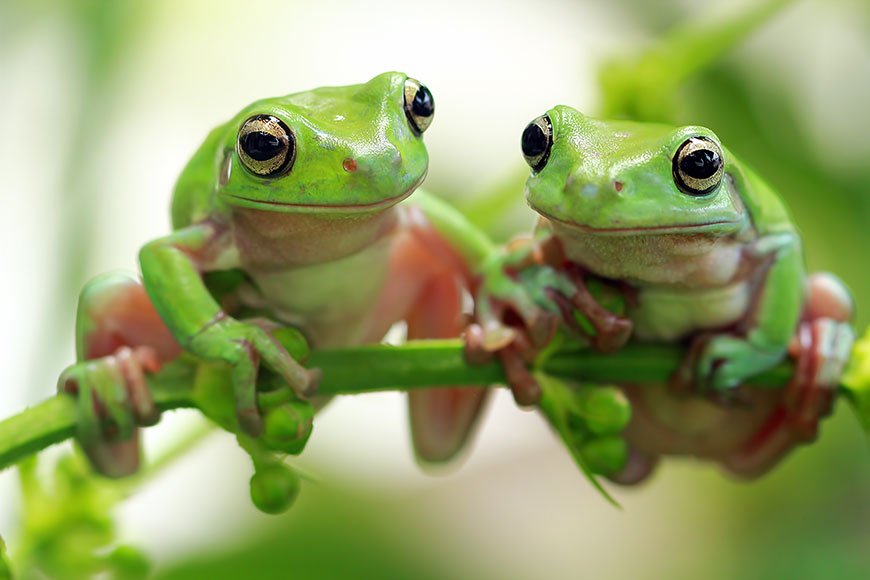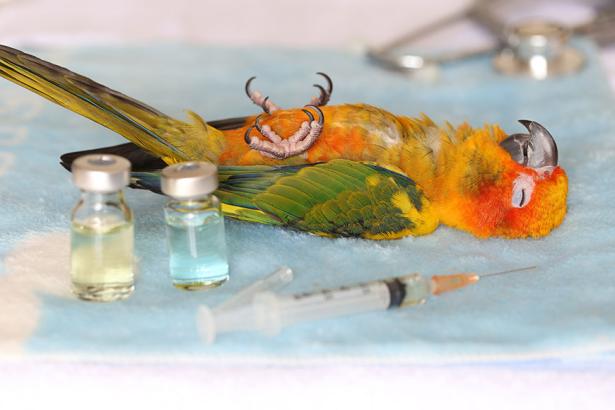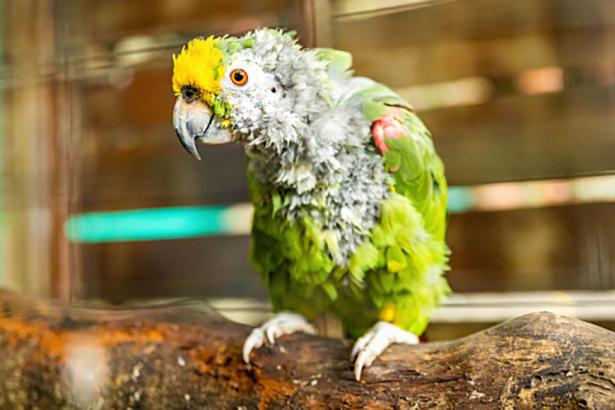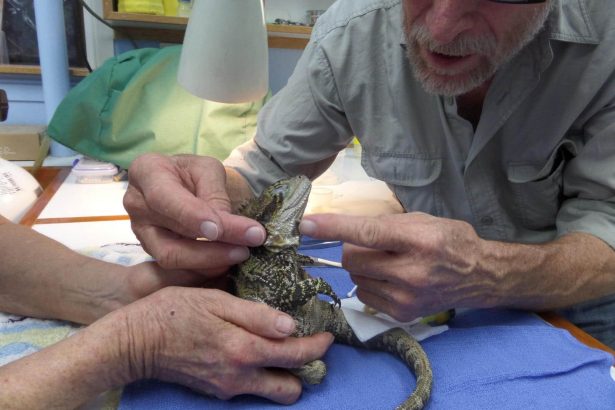As a veterinarian with a passion for the wellbeing of exotic pets, we’d thought we should share some insights on Australian tree frogs. The green tree frog (Litoria careulea), the red eyed tree frog ((Litoria chloris) and the white lipped tree frog (Litoria infrafrenata) are the most commonly kept tree frogs. Perhaps the best known of these captivating amphibians is the green tree frog (also known as White’s tree frog or dumpy tree frog), a common sight in household gardens in northeastern Australia.
In general, tree frogs are easy animal companions to keep. However, it must be noted that in order for them to live their best life, they require a carefully curated green tree frog habitat within your home.
In this guide, we aim to impart comprehensive and practical advice on keeping Australian tree frogs as pets, with the goal of ensuring their health, wellbeing, and happiness in captivity.
Understanding Australian Tree Frogs
It’s important to emphasise that understanding the unique nature of Australian tree frogs before deciding to keep white lipped tree frogs, red eyed tree frogs or green tree frogs as pets. These frogs are remarkable for their ability to adapt to a variety of environments, a trait that has enabled them to thrive across different Australian landscapes.
They are primarily nocturnal, meaning they are most active during the night. Their diet in the wild predominantly consists of insects and small invertebrates, which they skillfully hunt under the cover of darkness. Understanding these natural behaviours and dietary preferences is key to replicating a suitable environment for them in captivity.
Creating the Perfect Habitat
Enclosure
It can’t be said enough that the choice of enclosure is fundamental to the wellbeing of these arboreal amphibians. A green tree frog enclosure should be a vertical terrarium as it is most suitable for Australian tree frogs.
This type of frog enclosure mimics their natural habitat and matches their inclination to climb and explore vertically-oriented spaces. This setup should provide ample space for them to exhibit natural behaviours such as climbing and jumping, which are essential for their physical health and mental stimulation.
Temperature and Humidity
When it comes to frog tank setup, maintaining the correct temperature and humidity within the terrarium is critical. The ideal temperature range for these frogs is between 24-28°C, which closely mirrors the climate of their natural habitat.
Humidity levels should be kept between 70-80%, an important factor in ensuring their skin remains moist and healthy so you don’t end up constantly visiting your frog vet. Regular monitoring and adjustments are necessary to maintain these conditions and ensure proper green tree frog care – especially in response to seasonal changes in the home environment.
Lighting
When you keep a frog as a pet, UVB lighting plays a vital role in their health. This type of lighting is essential not just for simulating their natural environment, but also for facilitating essential physiological processes, including the synthesis of vitamin D3, which is crucial for calcium metabolism for your frog. Pet care is different when it comes to amphibians, so make sure the lighting is correct to make sure your green tree frog has the best possible environment.
Substrate and Decor
The choice of substrate is important for maintaining humidity and providing a comfortable and naturalistic environment. A substrate that retains moisture is ideal. Additionally, incorporating live plants, branches, and various hiding spots not only enriches their environment but also provides them with opportunities for natural behaviours like hiding and climbing, contributing to their overall wellbeing.
Diet and Nutrition
A common question is what do green tree frogs eat? As insectivores, tree frogs require a diet that closely resembles what they would consume in the wild. A varied diet consisting of crickets, mealworms, and other suitable insects, supplemented with calcium and vitamin powders, is essential in the green tree frog diet.
It’s important to feed adult frogs primarily in the evening, aligning with their nocturnal feeding habits. A juvenile green tree frogs diet, however, may require more frequent feeding due to their higher metabolic rates and growth demands.
Health and Wellness
Regular health checks are a non-negotiable aspect of caring for these frogs. Pet owners are advised to be vigilant for signs of illness, such as lethargy, a decrease in appetite, or changes in skin colour and texture. This could be something as simple as not following the Australian green tree frog diet that can be easily corrected before it is too late.
Early detection of health issues is crucial. It’s advisable to establish a relationship with a veterinarian who specialises in exotic pets, as they can provide tailored advice and treatment for these unique animals.
Handling and Interaction
While tree frogs can tolerate some handling, it should be done with care and infrequently to minimise stress. It’s imperative to wash hands thoroughly before and after handling to prevent the transfer of harmful substances to their sensitive skin. Remember, the primary goal in handling should always be the welfare and comfort of the frog.
Conclusion
Regular observation and prompt veterinary care are essential in maintaining the health of pet tree frogs. Many common health issues can be prevented with proper habitat management, diet, and regular health checks. If you notice any signs of illness in your tree frog, it’s important to consult with a veterinarian experienced in amphibian care as soon as possible. Remember, prevention is always better than cure, especially in the delicate balance of an amphibian’s health.
By understanding and catering to the specific needs of Australian tree frogs, owners can ensure these fascinating creatures lead a healthy, active, and fulfilling life in captivity.
FAQs
If you understand how to care for a green tree frog correctly, the green tree frog lifespan can be as long as 16 to 20 years. Important factors include setting up a proper vertical terrarium, keeping it clean, feeding them the correct diet and of course, regular check ups with your frog vet. In the wild, their lifespan might be shorter due to predation, disease, and environmental challenges.
Generally, Australian tree frogs are considered easy to care for. However, they require a carefully curated habitat that replicates their natural environment to live their best life.
A vertical terrarium is ideal for pet tree frogs. It should mimic their natural habitat, providing ample space for climbing and jumping, and maintain the correct temperature (24-28°C) and humidity levels (70-80%).
The substrate in the terrarium should retain moisture and provide a comfortable environment. Incorporating live plants, branches, and hiding spots enriches their habitat and supports natural behaviours.
UVB lighting is vital for tree frogs. It not only simulates their natural environment but is also essential for their physiological processes, including vitamin D3 synthesis for calcium metabolism.
While they can tolerate some handling, it should be done sparingly to minimise stress. Always wash hands before and after handling to protect their sensitive skin.
Signs of illness include lethargy, decreased appetite, or changes in skin colour and texture. Early detection and consultation with a specialised veterinarian are crucial. Regular health checks with a veterinarian experienced in exotic pets is an important part of their ongoing care.





